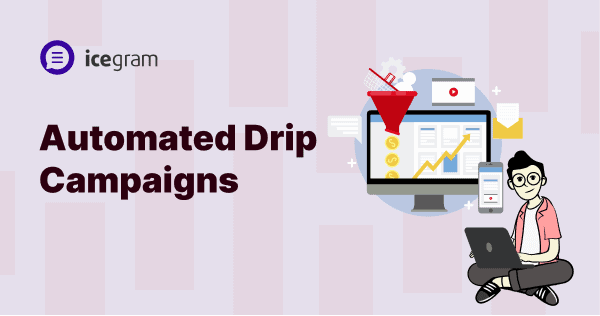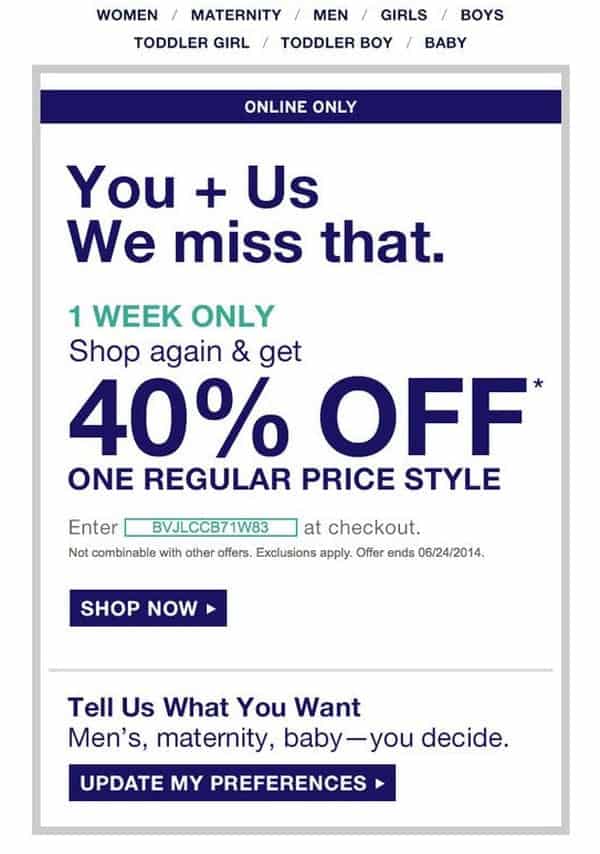In the fast-paced world of email marketing, standing out from the crowd and capturing your audience’s attention is no easy feat. This is where automated drip campaigns come into play – a powerful tool in email marketing.
They offer personalized and timely engagement without any manual effort, allowing you to stand out from the crowd and capture your audience’s attention.
Join us on this blog to explore the mechanics and significance of drip campaigns, and learn effective strategies to create successful ones. Unlock the full potential of automated drip campaigns with our knowledge and tools.
What is a drip campaign?
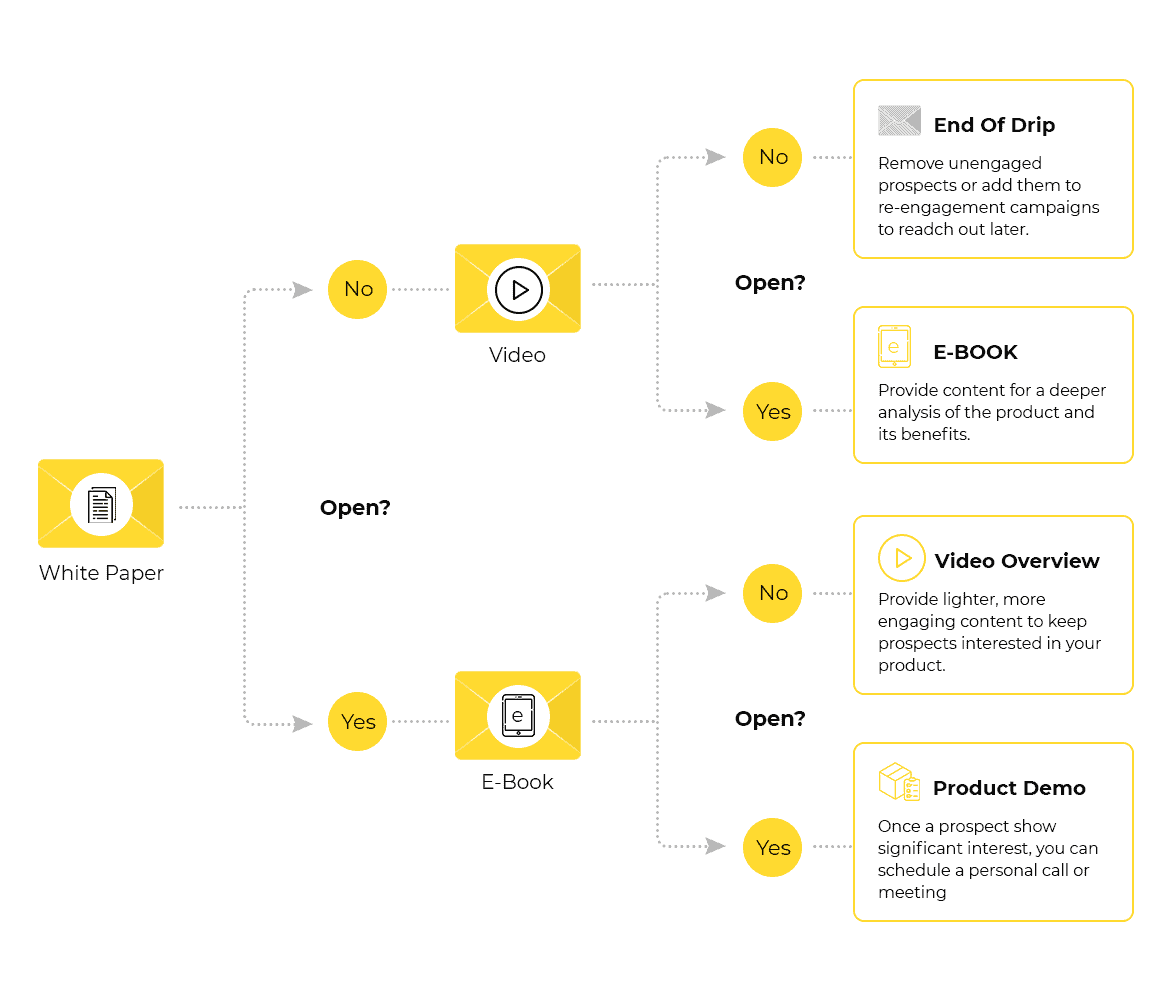
(source: email uplers)
In simple terms, a drip campaign is a carefully crafted series of emails automatically sent to your target audience over a set period. Each email is strategically designed to deliver valuable content, nurture relationships, and guide recipients along their journey toward loyalty.
Importance of automation in drip campaigns
Automation is the lifeblood of successful drip campaigns. It brings efficiency, personalization, and scalability to your email marketing efforts. Here’s why it is essential:
- Timely communication: Automate email deliverability based on user actions or time intervals for maximum engagement and ROI opportunities.
- Personalization at scale: Utilize automation to personalize emails based on user data, demographics, and behavior, fostering stronger connections and driving higher engagement and conversion rates.
- Consistent messaging: Ensure a cohesive and sequential email sequence through automated workflows, guiding prospects seamlessly through the customer journey.
- Efficiency and time savings: Streamline the email process with automation, allowing you to create and schedule emails in advance, freeing up time for other marketing activities.
- Tracking and analytics: Leverage automation tools to track key metrics such as open rates, click-through rates, and conversions, enabling data-driven optimization of your drip campaigns over time.
Why and when do you need a drip campaign?
Just like people seek familiarity and personalized experiences in their favorite neighborhoods, customers also crave recognition and tailored interactions on e-commerce sites.
In fact, a recent study from MoEngage claims that 41% of North American consumers want weekly brand communication that recognizes them. 32% will switch if messages are irrelevant. Targeted content is crucial to retain loyalty and avoid losing customers.
Building and nurturing customer relationships
To ensure your customers feel that you are on the same page as them, it’s crucial to engage with them through targeted and personalized communication consistently. By aligning your messaging with their specific actions, goals, and pain points, you can establish a connection beyond generic marketing.
Maintaining strong and lasting relationships with your customers and delivering valuable information can help you build trust over time by keeping in touch.
80% of consumers who are provided with personalized experiences are more likely to purchase from brands, according to a study by Epsilon. Engaging customers on a deeper level, showcasing your expertise, and cultivating loyalty are all benefits of drip campaigns.
Maximizing customer engagement and conversion
Engagement is key to driving conversions, and a well-executed drip campaign can work wonders in this regard. By delivering a sequence of targeted emails, you can keep your brand top-of-mind, encourage interaction, and guide leads through the marketing funnel.
In fact, according to the Data & Marketing Association (DMA), segmented and targeted emails generate 58% of all revenue. A drip campaign ensures that you’re delivering the right message at the right time, increasing the chances of conversion and boosting your bottom line.
Timing and personalization considerations
Timing is everything in marketing, and a drip campaign allows you to send emails at strategic intervals. By leveraging automation, you can set up triggers based on user behavior or predefined time intervals.
This ensures that your messages are delivered when recipients are most likely to engage. Additionally, personalization plays a vital role in drip campaign success. The average open rate of personalized email messages is 18.8% versus 13.1% for non-personalized emails, according to a study.
By tailoring your content based on customer preferences and demographics, you can create a more meaningful connection and drive higher engagement rates.
Key factors for a successful drip campaign
Creating an effective drip campaign requires careful planning and execution. By considering the following key factors, you can increase the chances of success and maximize the impact of your email marketing efforts:
- Planning and strategy: Begin by defining clear goals and objectives for your drip campaign. Conduct thorough research to understand your target audience, their preferences, and their pain points. Plan a strategic sequence of emails that aligns with your campaign objectives and maps out the customer journey.
- Segmentation and personalization: Segmenting your email list based on various criteria allows you to deliver highly targeted and personalized content. Leverage demographic data, sign-up dates, purchase history, and previous email engagements to create relevant messages for specific user groups. Personalization fosters stronger connections and increases engagement and conversions.
- Compelling content: Craft compelling and valuable content that resonates with your audience. Tailor your messages to address their pain points, provide solutions, and showcase your expertise. Use storytelling techniques, engaging visuals, and clear calls to action to captivate and guide recipients through the desired actions.
- Automation and timing: Utilize automation tools to schedule and deliver emails at optimal times. Time intervals, user behavior triggerings, and customer journey stages should be taken into account when communicating with customers. Automating drip campaigns saves time, maintains consistency, and enables personalized follow-ups based on user actions.
- Testing and optimization: Regularly test and analyze your drip campaign’s performance. Measure metrics like open rates, click-through rates, and conversions to gauge effectiveness. Use A/B testing to experiment with different subject lines, content variations, and CTAs. Continuously optimize your campaign based on insights gained to improve results over time.
By incorporating these key factors into your drip campaign strategy, you can create a successful and impactful email marketing automation series. Remember to adapt and refine your approach based on your unique business objectives, industry, and target audience for the most effective results.
Types of drip campaigns with examples
Drip campaigns come in various forms, each designed to achieve specific marketing goals and engage with your audience in different ways. Understanding the types of drip campaigns available allows you to choose the best approach for your business.
Let’s explore common types of drip campaigns and examples that can inspire your websites:
Welcome and onboarding campaigns
When it comes to welcoming customers, an onboarding drip campaign is a smart approach to steer them toward the products and services that match their interests.
This type of campaign is triggered when a new subscriber joins your email list. It aims to introduce them to your brand, nurture the relationship, and guide them through the onboarding process.
It’s wise to showcase the range of products and services you offer in your onboarding email. By doing so, you have the opportunity to spark their interest and potentially drive an immediate purchase. You never know when a well-timed introduction can captivate their attention and lead to a conversion.
Example: A welcome series that includes a personalized welcome email, a product or service introduction, and helpful resources to get started.

(source: reallygoodemails)
Educational and nurturing campaigns
An educational drip campaign focuses on providing valuable content and insights to educate your audience. It helps establish your brand as an authority and builds trust.
Whether you’re promoting a service/ physical product or software, it’s essential to clearly explain what your offering is, its functionalities, and how users can benefit from it.
Leave no room for ambiguity. Empower your clients with the knowledge they need to make informed decisions.
Example: A series of emails delivering educational blog posts, industry guides, or tutorial videos to help users gain knowledge and solve specific challenges.
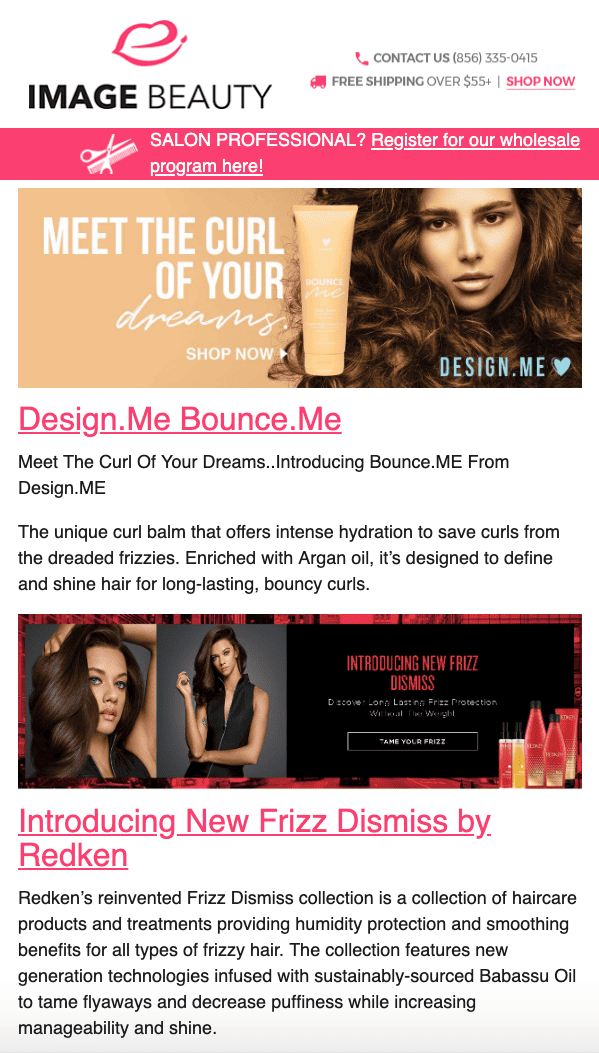
(source: snov)
Re-engagement and win-back campaigns
These types of campaigns play a vital role in reconnecting with inactive customers and reviving their interest in your brand. They are designed to rekindle relationships, recapture attention, and bring back customers who haven’t interacted with your emails or made a purchase in a while.
By sending targeted and personalized emails, you can pique their interest, provide incentives, and reignite their desire to connect with your products or services.
They help in segmenting your inactive customer base, crafting compelling messages, and strategically timing your emails, you can optimize the chances of winning back their attention and driving conversions.
Example: A series of re-engagement emails offering special promotions, personalized recommendations, or exclusive content to entice them back.
(source: designmodo)
Cross-selling and upselling campaigns
This type of campaign targets existing customers with the goal of increasing their lifetime value by promoting additional products or services that complement their previous purchases.
By suggesting items that complement their initial choice, you can increase the average order value and provide a more comprehensive solution to their needs.
They help in making opportunities to add value to your customers’ experience while increasing your revenue. Implement these campaigns strategically, with a focus on personalized recommendations and benefits, to drive customer satisfaction and business growth.
Example: A series of emails showcasing related products, customer testimonials, or exclusive offers to encourage customers to upgrade or make additional purchases.
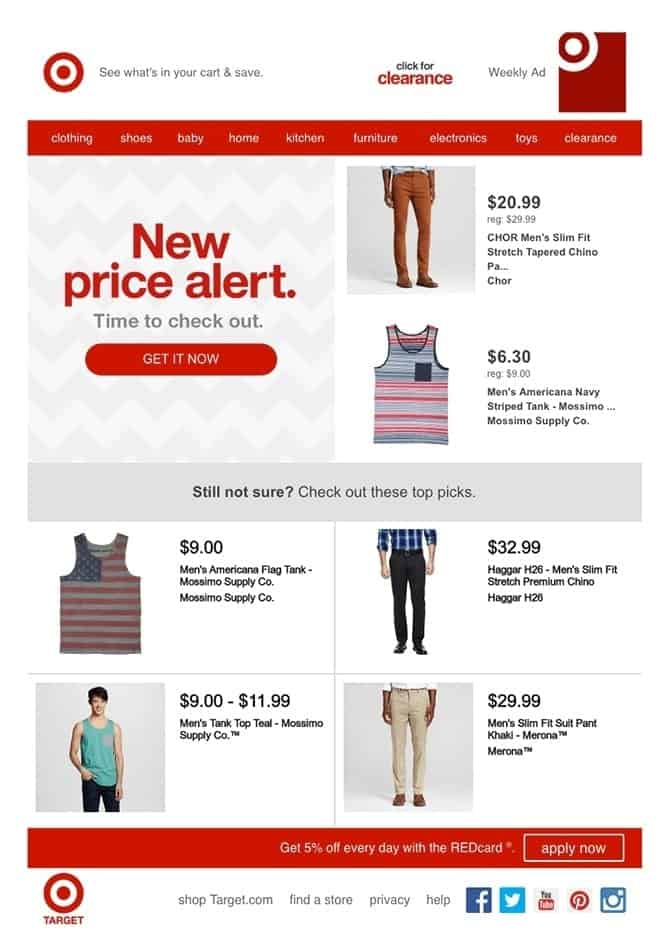
(source: avada)
Abandoned cart recovery campaigns
The primary objective of an abandoned cart recovery campaign is to re-engage with these customers, remind them of the products they showed interest in, and provide incentives to encourage them to return and complete their purchase.
It aims to remind them of their abandoned cart and entice them to complete the transaction.
Offering incentives such as discounts, free shipping, or limited-time promotions can create a sense of urgency and motivate customers to take action.
Example: A series of emails that include a friendly reminder, personalized product recommendations, and limited-time discounts to incentivize a purchase.
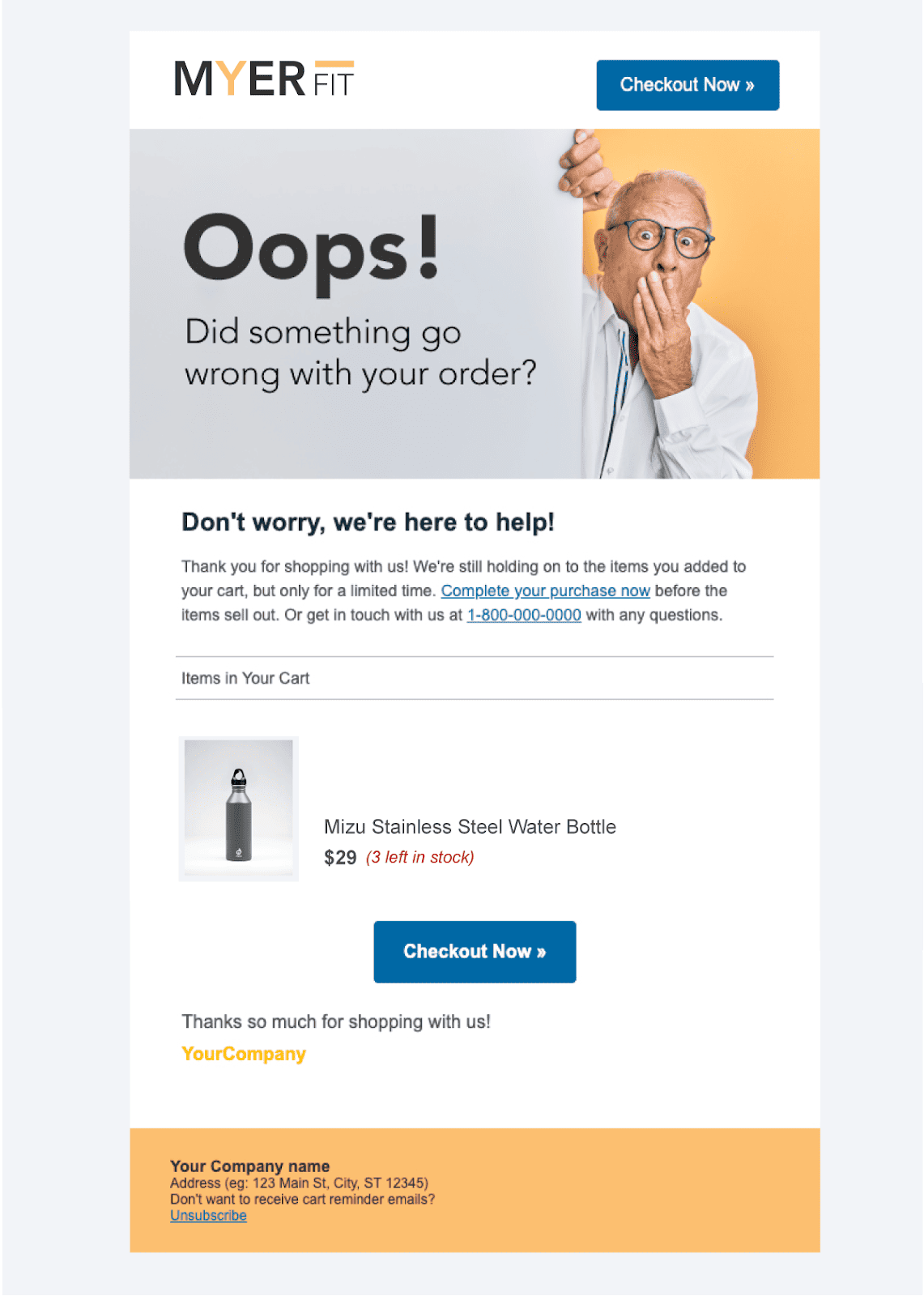
(source: MyerFit)
Conclusion
Drip campaigns are a crucial tool in your email marketing strategy, allowing you to automate and optimize customer communication. By leveraging automation, you can deliver personalized messages, maximize engagement, and drive conversions.
To effectively manage drip campaigns, utilize plugins like Icegram Express. Its user-friendly interface and advanced features make it an excellent choice for creating powerful drip campaigns.
Start implementing drip campaigns today and experience the transformative impact of automated, targeted communication.
Additional resources:

